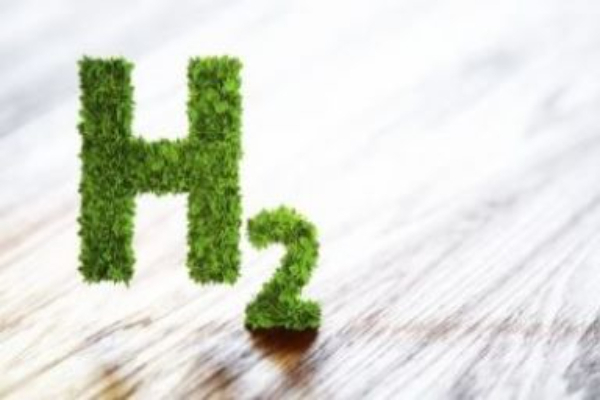Only few projects in India have reached the Final Investment Decision (FID) or secured long-term offtake agreements from domestic or international markets

The 11th edition of India Energy Storage Week 2025 (IESW) organised by India Energy Storage Alliance (IESA) kicked off today with a gala inaugural ceremony at IICC Yashobhoomi, New Delhi.
Industry Body IESA has launched the IESA Market Reports, which highlight that India’s hydrogen demand is expected to rise at a CAGR of 3% to 8.8 million metric tons per annum (MTPA) by 2032.
Despite announcements of Green Hydrogen projects with over 9 MTPA capacity, few projects in India have reached the Final Investment Decision (FID) or secured long-term offtake agreements from domestic or international markets. In the baseline scenario, with 30 per cent of the announced GH2 capacity commissioned within ten years, electrolytic c bio-H2 supply can meet approximately 31 per cent of domestic demand in 2032.
The ceremony took place in the esteemed presence of Dr. Ajay Mathur, Ex-DG- International Solar Alliance & Professor, IIT Delhi, Malini Dutt, Trade and Investment Commissioner – India, NSW Government, Manish Sharma, Chairman, Panasonic, Stephen Fernands, Founder & President, Customized Energy Solutions (CES), Vinayak Walimbe, Managing Director, CES and Debmalya Sen, President, IESA, along with over 200 global energy leaders.
Addressing the inaugural Ceremony, Mathur said, “IESW 2025 embodies the collective aspirations of the battery and storage communities, fostering collaboration and knowledge exchange among industry professionals. It serves as a crucial platform where individuals from various sectors, such as battery manufacturing, application, and electricity demand, can come together to learn from one another and advance their understanding of the sector.”
The report further highlighted that, for schemes being implemented under NGHM, a call for proposals/bids has been issued, or winning bidders/proposals announced, or fund disbursement has begun. Among these, the largest allocation is for subsidies under the green hydrogen (GH2 Tranche 1, 2), electrolyzer manufacturing (ELY Tranche 1,2), and green ammonia (GNH3 aggregation) tenders under the Strategic Initiative for Green Hydrogen Transition (SIGHT). Out of 9.2 million tonnes per annum (MTPA) project announcements, 4 states account for 82% announced GH2 projects: Odisha (38%), Gujarat (26%), Karnataka (12%), Andhra Pradesh (6%); 72% of the announced projects are targeting GH2 use for ammonia production, whereas 20% have not announced end use applications. Key drivers of the Levelized Cost of Hydrogen (LCOH) produced through water electrolysis include the cost of landed electricity, the capital expenditures (CAPEX) for the electrolyzer stack and balance of plant, and the capacity utilization of the electrolyzer.
Vinayak Walimbe, Managing Director, Customized Energy Solutions (CES), further emphasized, “Despite various policy interventions and government initiatives to promote the green hydrogen mission, several challenges remain in addressing the urgent issue of decarbonization. The IESA India Hydrogen Report, launched at IESW 2025 today, is crucial in raising awareness among policymakers, industry leaders, and stakeholders in the sector, helping to further accelerate the mission.”
According to the status of India’s green hydrogen transition report, the production cost of hydrogen from fossil fuels in India is nearly twice the cost of $1 per kilogram of hydrogen or even higher. For consumers who obtain hydrogen—representing about 6% of the total hydrogen market—the landed cost of hydrogen is even greater due to storage and transportation expenses. Additionally, open-access electricity regulations often restrict the renewable energy offset for commercial and industrial consumers, which could reduce the capacity utilization of electrolyzers. Our estimated Levelized Cost of Hydrogen (LCOH) in the base case is two to four times higher than the production cost of fossil fuel-based hydrogen. In a highly optimistic scenario, the estimate is 1.5 to 2.5 times higher, which is very close to the recent first price discovery of green hydrogen in India.
Debmalya Sen, President, India Energy Storage Alliance (IESA) said, “With the support of government initiatives to foster innovation and investment in clean energy technologies, IESW 2025 will bring together industry leaders, government representatives, and global experts to showcase groundbreaking solutions. This gathering will pave the way for India's transition to a resilient energy system, ensuring we meet our growing energy demands while keeping our target of production capacity of 5 million tonnes per annum (MMTPA) of green hydrogen by 2030 in sight.”
IESW 2025 will serve as a major platform by bringing together Ministries, Government Representatives, and Companies from over 20 Countries on stage. Providing a launchpad for over 300 unique product innovations in EVs, charging infrastructure, solar, green hydrogen, batteries, and RE. The event will also witness 7+ factory/ new product announcements from India’s top manufacturers. The three-day event will witness cutting-edge futuristic energy storage solutions, including lithium-ion, lithium-sulfur, sodium-ion batteries, and other technologies from across the globe.
Subscribe to our newsletter & stay updated.